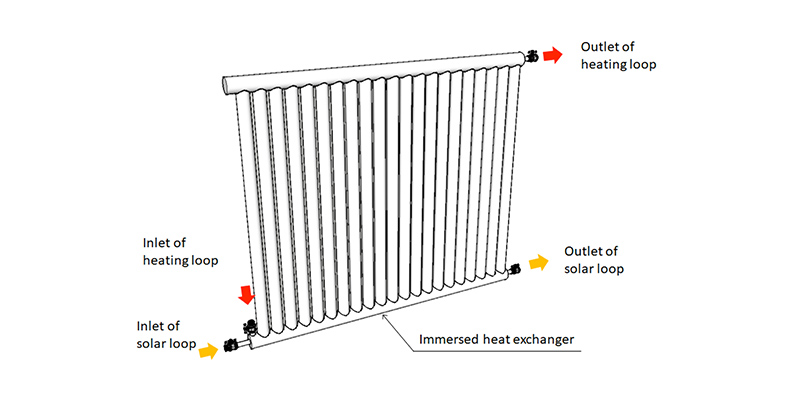Downloads
DOI:
https://doi.org/10.7480/jfde.2018.2.2048Keywords:
Solar active envelope systems, Building integration, Product development, Heat storageAbstract
The integration of active solar thermal technologies into building envelopes has recently received a rising attention, promoted within international projects as IEA Task 56 or Cost Action 1403. Although the façade integration of solar thermal collectors is a long debated topic, less attention is paid to the building integration of solar water storages.
The scope of the paper is to highlight the main barriers experienced in the development of a façade-integrated solar water storage. This activity is a part of the SunRise project that aims to develop new unitized curtain wall element for tertiary office buildings. The façade element integrates a complete solar thermal system consisting of a solar collector, a hot water storage, a radiant panel and all the required operation components. A mock-up of the solar facade is manufactured to identify practical constructive issues. The thermal behaviour of the tank is analysed through FEM simulations and laboratory tests.
How to Cite
Published
Issue
Section
License
Copyright (c) 2018 Matteo D'Antoni, Paolo Bonato, Roberto Fedrizzi

This work is licensed under a Creative Commons Attribution 4.0 International License.
Authors or their institutions retain copyright to their publications without restrictions.
References
International Energy Agency (IEA), Solar Heating and Cooling (SHC) Programme (2016). Task 56 – Building Integrated Solar Envelope Systems for HVAC and Lighting. http://task56.iea-shc.org/.
COST Action TU 1403 (2014). Adaptive Façade Network.
International Energy Agency (IEA), Solar Heating and Cooling (SHC) Programme (2009). Task 41 – Solar Energy and Architecture, http://task41.iea-shc.org/.
Soppelsa A., Fedrizzi R., Buffa S., Bertesina D., Nouvel R., Cotrado M. (2016). D4.3 Report on Assessed Industrialized Energy Generation Kit, iNSPiRe EU FP7 project. www.inspirefp7.eu.
Givoni B. (1998). Climate Considerations in Building and Urban Design. John Wiley & Sohn.
De Gracia A., Cabeza L. F. (2015). Phase change materials and thermal energy storage for buildings. Energy and Buildings, 103, 414-419. doi.org/10.1016/j.enbuild.2015.06.007
Kolaitis D., Garay Martinez R., Founti, M. A. (2015). An experimental and numerical simulation study of an active solar wall enhanced with phase change materials. Journal of Façade Design and Engineering, 3, 71-80. doi.org/10.3233/FDE-150027
D’Antoni M., Saro O. (2012). Massive Solar thermal Collectors: A critical literature review. Renewable and Sustainable Energy Reviews, 16, 3666-3679. doi.org/10.1016/j.rser.2012.02.076
Risholt B., Asphaug S., Busklein J.O., Uvsløkk S., Rognvik E., Grynning S. (2015). Window with integrated solar collector. Climate resistance evaluation report. SINTEF Academy Press.
WAF solar façade, http://www.waf.at/solar-systems/ (accessed on 27.03.2018).
Singh R., Lazarus I.J., Souliotis M. (2016). Recent developments in integrated collector storage (ICS) solar water heaters: A review. Renewable and Sustainable Energy Reviews, 54, 270-298. doi.org/10.1016/j.rser.2015.10.006
Sopian K., Syahri M., Abdullah S., Othman M.Y., Yatim B. (2004). Performance of a non-metallic unglazed solar water heater with integrated storage system. Renewable Energy, 29, 1421-1430. doi.org/10.1016/j.renene.2004.01.002
Reddy K.S. (2007). Thermal Modeling of PCM-Based Solar Integrated Collector Storage Water Heating System. Transactions of the ASME, 129, 458-464. doi:10.1115/1.2770753
Khalifa A.J., Jabbar, R.A.A. (2010). Conventional versus storage domestic solar hot water systems: A comparative performance study. Energy Conversion and Management, 51, 265-270. doi.org/10.1016/j.enconman.2009.09.021
DGS (2005). Planning and Installing Solar Thermal Systems. A guide for installers, architects and engineers. James & James / Earthscan.
